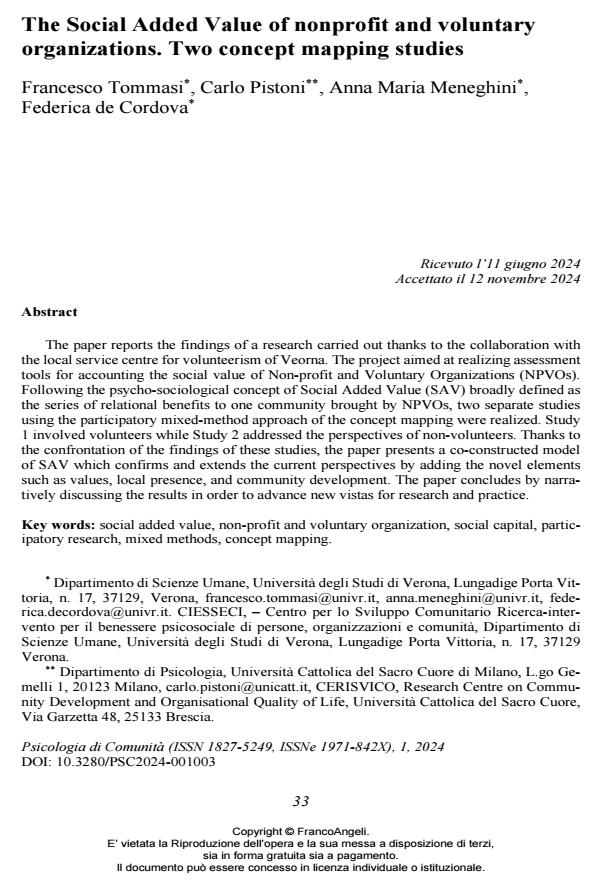The Social Added Value of nonprofit and voluntary organizations. Two concept mapping studies
Journal title PSICOLOGIA DI COMUNITA’
Author/s Francesco Tommasi, Carlo Pistoni, Anna Maria Meneghini, Federica de Cordova
Publishing Year 2025 Issue 2024/1
Language English Pages 15 P. 33-47 File size 206 KB
DOI 10.3280/PSC2024-001003
DOI is like a bar code for intellectual property: to have more infomation
click here
Below, you can see the article first page
If you want to buy this article in PDF format, you can do it, following the instructions to buy download credits

FrancoAngeli is member of Publishers International Linking Association, Inc (PILA), a not-for-profit association which run the CrossRef service enabling links to and from online scholarly content.
The paper reports the findings of a research carried out thanks to the collaboration with the local service centre for volunteerism of Veorna. The project aimed at realizing assessment tools for accounting the social value of Non-profit and Voluntary Organizations (NPVOs). Following the psycho-sociological concept of Social Added Value (SAV) broadly defined as the series of relational benefits to one community brought by NPVOs, two separate studies using the participatory mixed-method approach of the concept mapping were realized. Study 1 involved volunteers while Study 2 addressed the perspectives of non-volunteers. Thanks to the confrontation of the findings of these studies, the paper presents a co-constructed model of SAV which confirms and extends the current perspectives by adding the novel elements such as values, local presence, and community development. The paper concludes by narratively discussing the results in order to advance new vistas for research and practice.
Keywords: social added value, non-profit and voluntary organization, social capital, participatory research, mixed methods, concept mapping.
Francesco Tommasi, Carlo Pistoni, Anna Maria Meneghini, Federica de Cordova, The Social Added Value of nonprofit and voluntary organizations. Two concept mapping studies in "PSICOLOGIA DI COMUNITA’" 1/2024, pp 33-47, DOI: 10.3280/PSC2024-001003